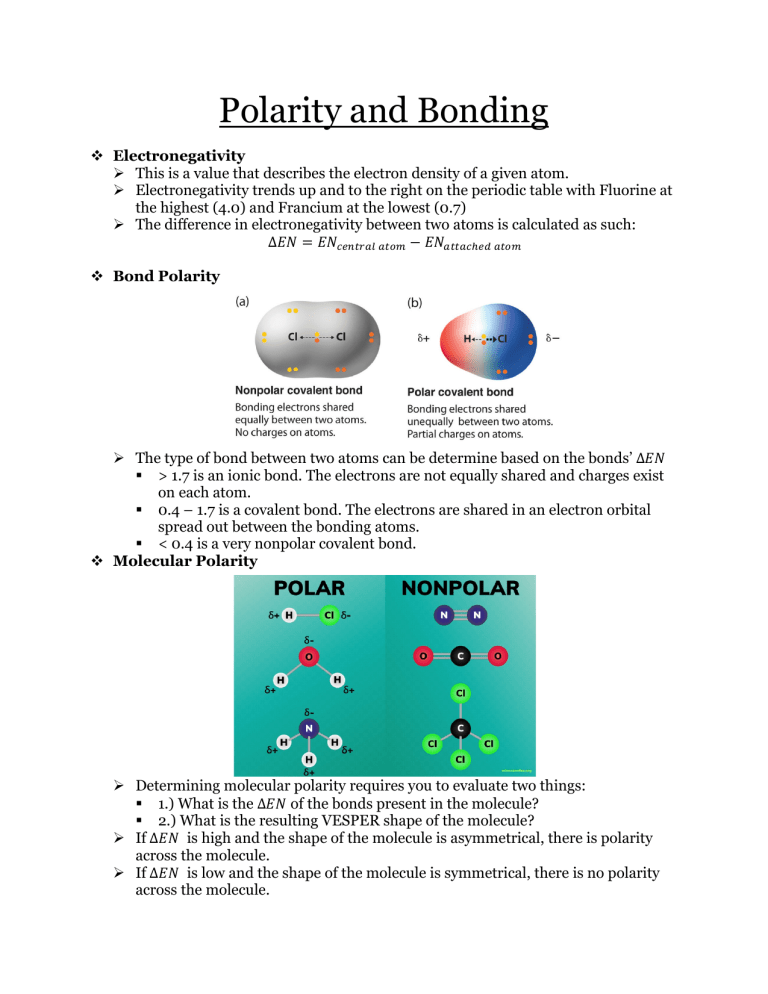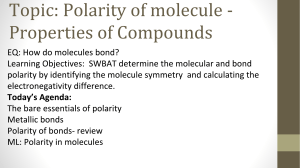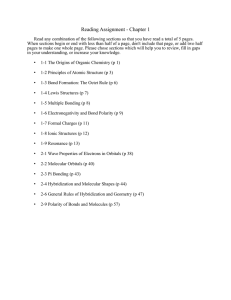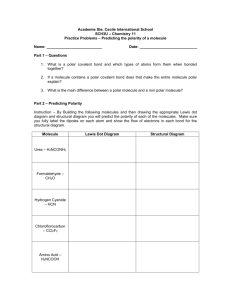
Polarity and Bonding v Electronegativity Ø This is a value that describes the electron density of a given atom. Ø Electronegativity trends up and to the right on the periodic table with Fluorine at the highest (4.0) and Francium at the lowest (0.7) Ø The difference in electronegativity between two atoms is calculated as such: ∆𝐸𝑁 = 𝐸𝑁!"#$%&' &$)* − 𝐸𝑁&$$&!+", &$)* v Bond Polarity Ø The type of bond between two atoms can be determine based on the bonds’ ∆𝐸𝑁 § > 1.7 is an ionic bond. The electrons are not equally shared and charges exist on each atom. § 0.4 – 1.7 is a covalent bond. The electrons are shared in an electron orbital spread out between the bonding atoms. § < 0.4 is a very nonpolar covalent bond. v Molecular Polarity Ø Determining molecular polarity requires you to evaluate two things: § 1.) What is the ∆𝐸𝑁 of the bonds present in the molecule? § 2.) What is the resulting VESPER shape of the molecule? Ø If ∆𝐸𝑁 is high and the shape of the molecule is asymmetrical, there is polarity across the molecule. Ø If ∆𝐸𝑁 is low and the shape of the molecule is symmetrical, there is no polarity across the molecule.







